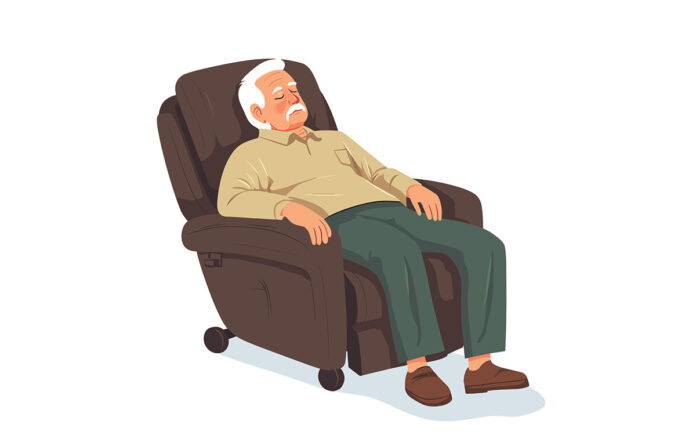When night time sleep is disrupted, unrefreshing or not long enough, many of us are prone to daytime drowsiness, prompting us to take naps or perhaps even nod off unintentionally. Are there any advantages or disadvantages to daytime napping?
And, how can you make the most of a good daytime nap without impacting on your night time sleep?
Napping, when done right, can be a powerful way to restore energy and alertness. A brief, well-timed nap can help fight fatigue without leaving you groggy – provided it’s managed wisely.
For those affected by insufficient or interrupted sleep, such as night-shift workers, frequent travellers, students, and anyone dealing with sleep difficulties, a power nap really can be an effective solution.
What is a power nap?
A power nap is a brief, intentional rest designed to relieve tiredness and boost alertness. The key to a successful power nap is timing it to avoid deeper sleep stages. Waking from lighter sleep stages helps you feel refreshed. Sleeping too long and waking up in a deep sleep phase leaves us feeling somewhat sluggish – a state known as ‘sleep inertia’.
How long should a power nap be?
Research suggests that naps of 10 to 30 minutes are ideal for quickly feeling rejuvenated. Napping for 20 minutes or less helps boost alertness and cognitive function without leaving you groggy. Short naps are also unlikely to interfere with night time sleep if taken in the early or mid-afternoon.
A longer nap — about 90 minutes — can also be beneficial as it completes a full sleep cycle. Since lighter sleep occurs at the end of each sleep cycle, a 90-minute nap usually leads to minimal grogginess. Longer naps can impact on night time sleepiness so reserve these for the odd occasion when you really need it.
Power nap benefits
- Power naps can offer a range of wide range of benefits:
- Reduced fatigue
- Increased alertness and focus
- Improved performance and safety for shift workers
- Enhanced memory retention
- Faster reaction times
- Improved mood
- Better heart health
How to Take an Effective Power Nap
To make the most of a power nap, try the following:
- Set a Timer: Keep your nap to approximately 20 minutes. Set an alarm for 25 minutes to give yourself 5 minutes to wind down and fall asleep and also to wake you up so you avoid oversleeping.
- Prepare for Comfort and an undisturbed rest:
− Cool the room to 18-22°C.
− Silence electronic devices.
− Lie down somewhere comfortable, preferably your bed.
− Use an eye mask and blackout curtains.
− Block any ambient light from clocks or screens.
− Youtube some sleep music to help you relax
− Use earplugs if needed.
3. Added Energy: Some people drink a small amount of caffeine before napping for a “coffee nap,” where they plan it, so the caffeine takes effect as they wake. Avoid caffeine in the nine hours before bedtime, however, to maintain healthy sleep at night.
4. Post-Nap Tips: To shake off any residual grogginess, try stepping outside for sunlight, splashing your face with cool water, drinking 200mls of fresh cool water doing some gentle squats, punch your arms in the air a few times to get the circulation going.
5. Supplements to aid sleep: Research shows magnesium is very supportive in activating GABA, our relaxation and sleep pathways. Gut lining absorption can diminish as we age so a magnesium liquid or magnesium powder added to water is considered best practice.
Please check out the expert magnesium formulations we have available at www.SleepDrops.co.nz or call and talk to us directly 0800 345 999.


